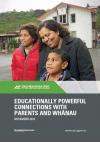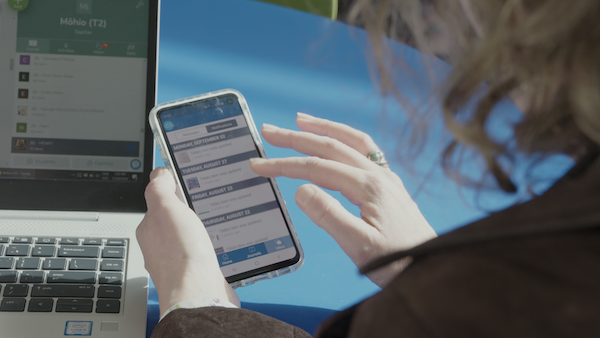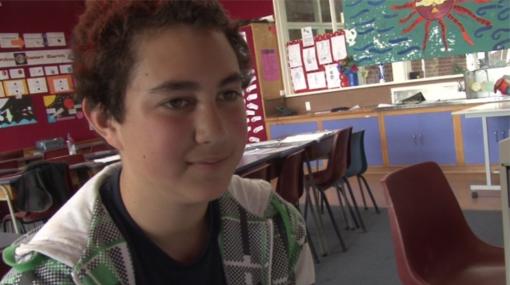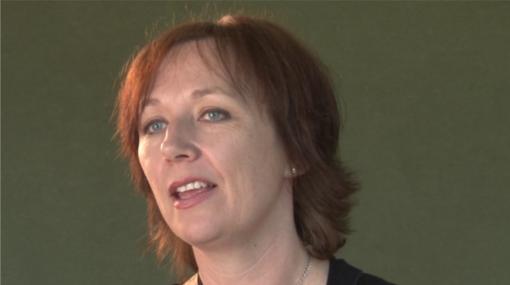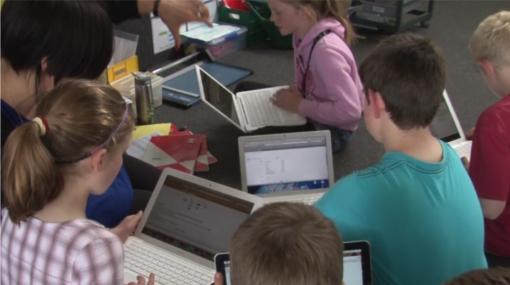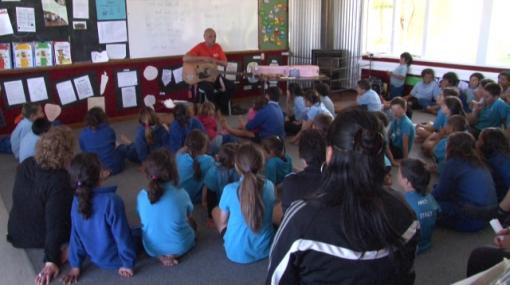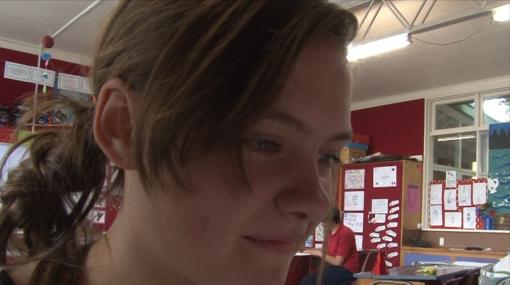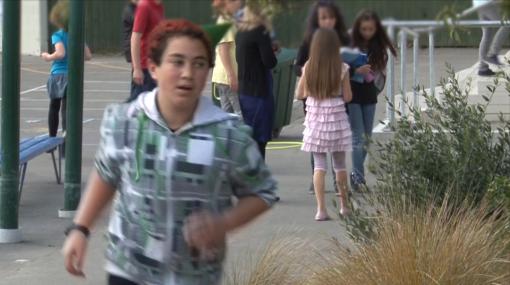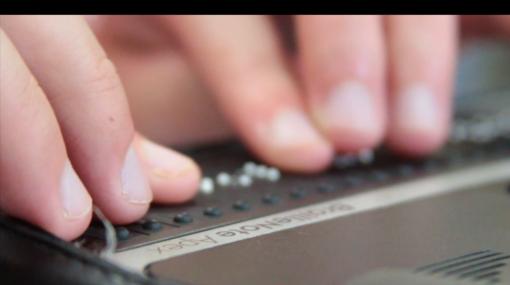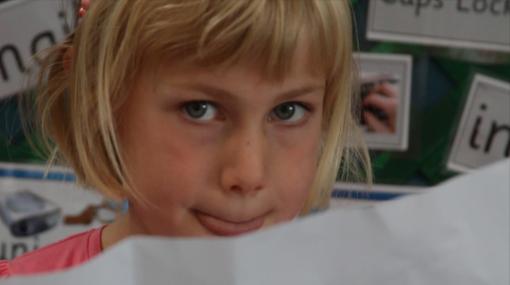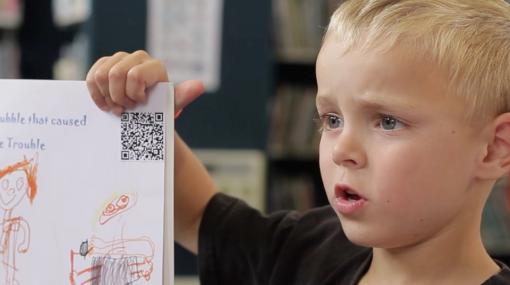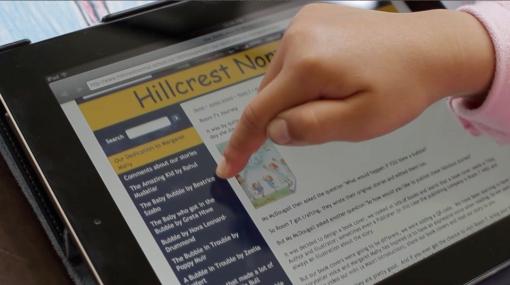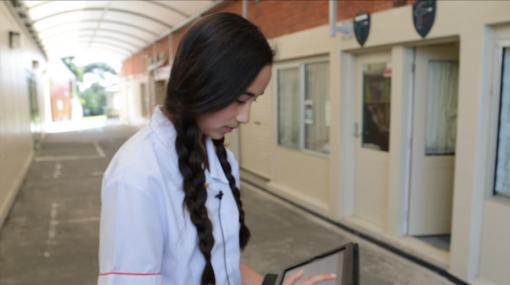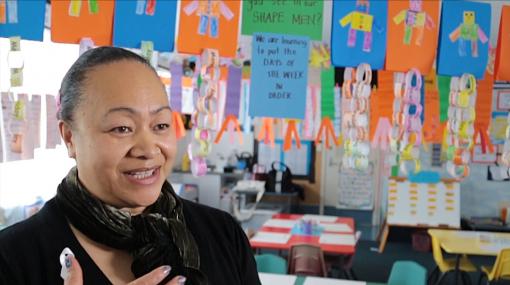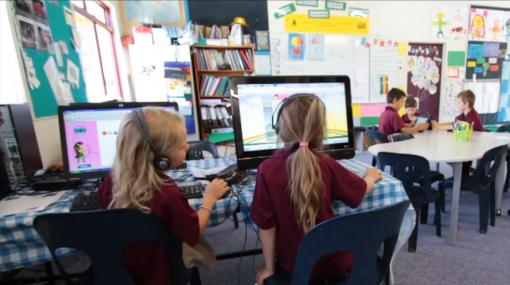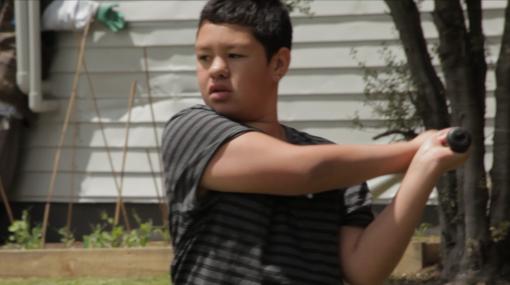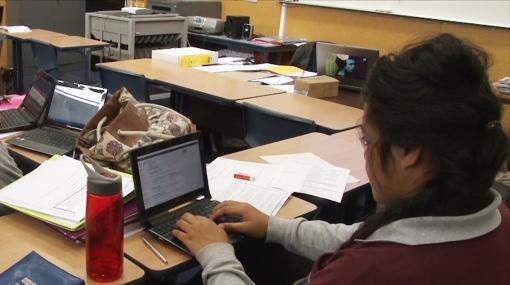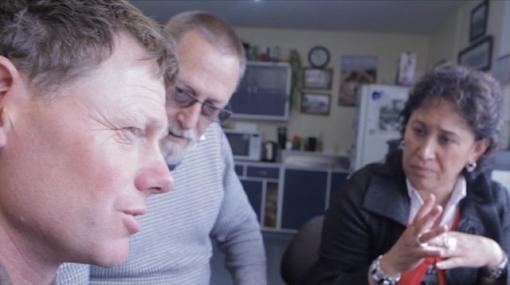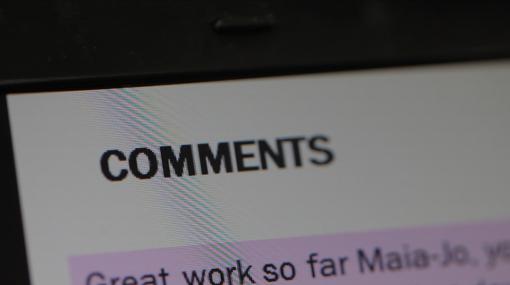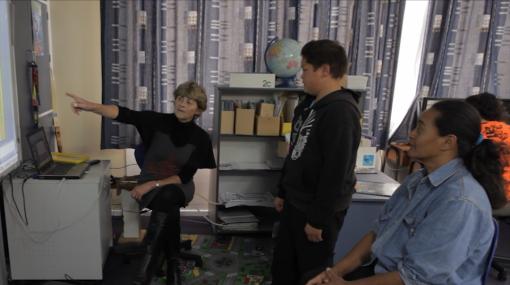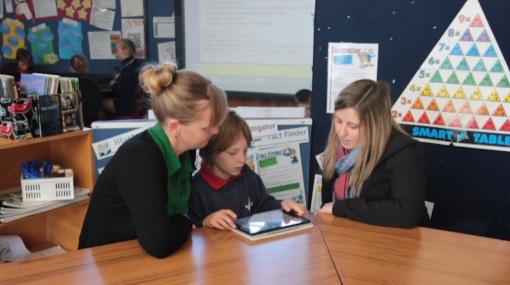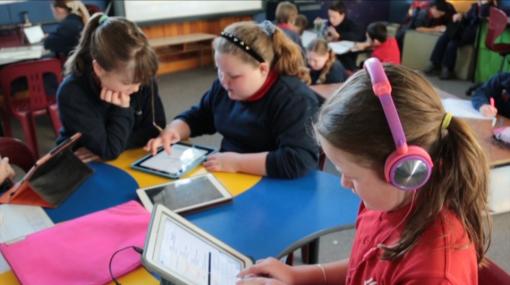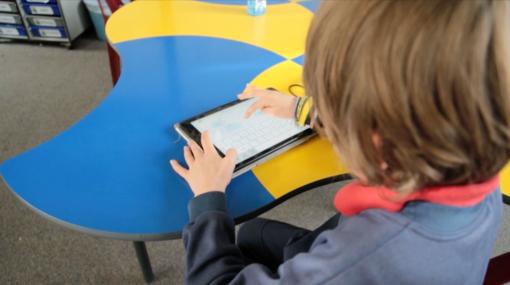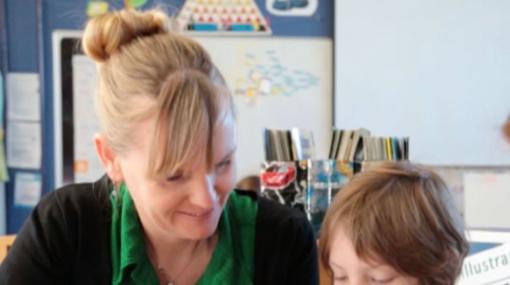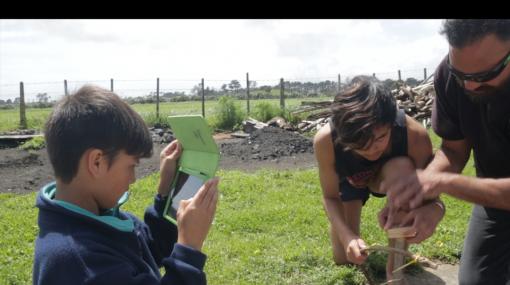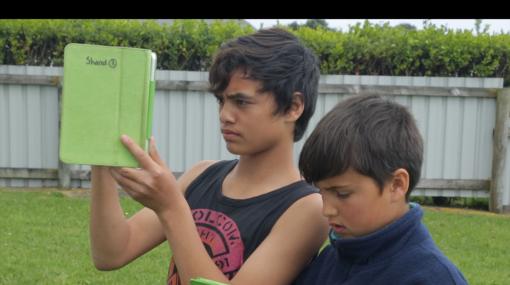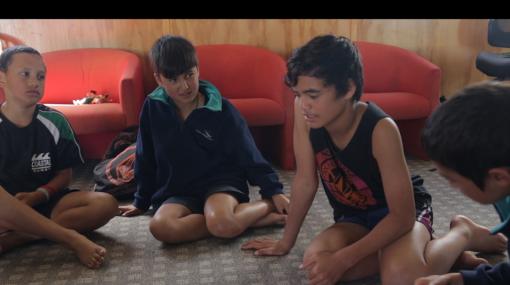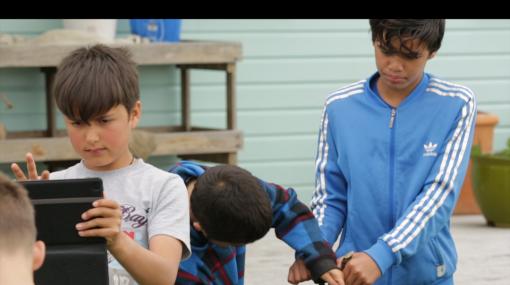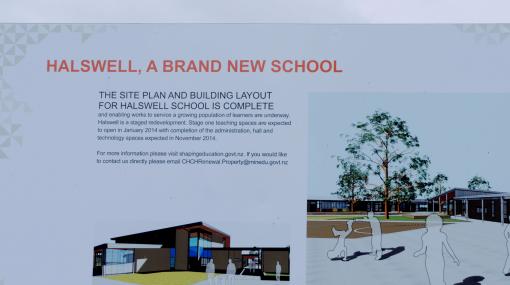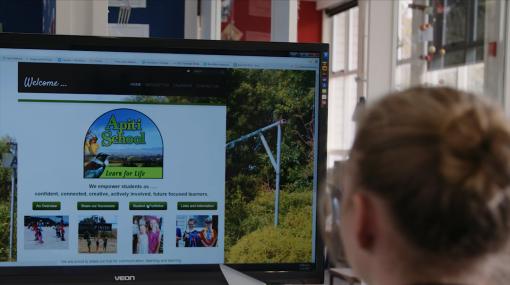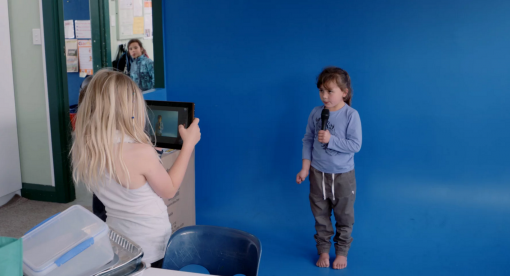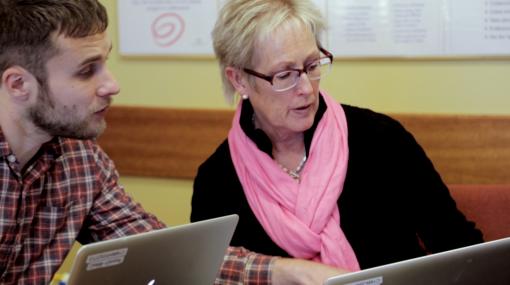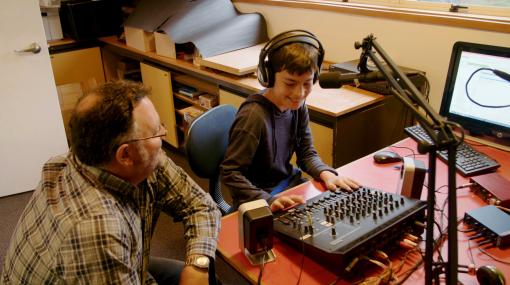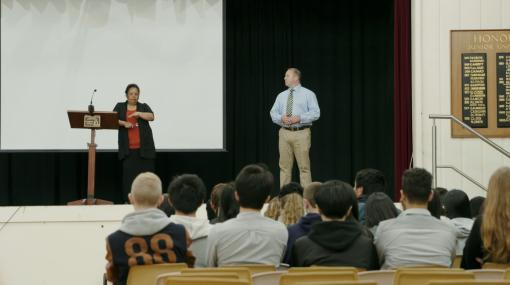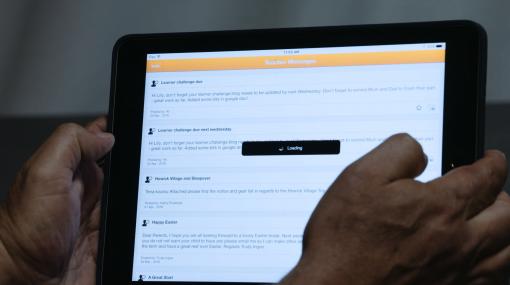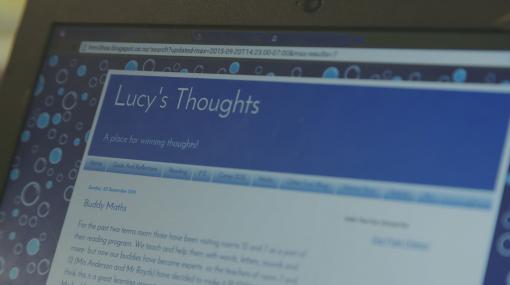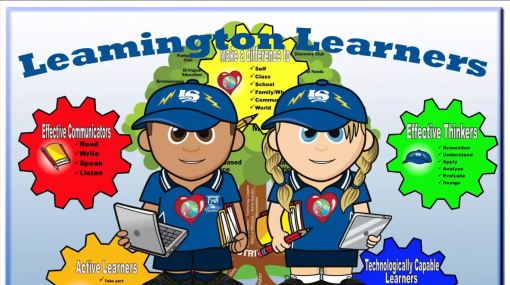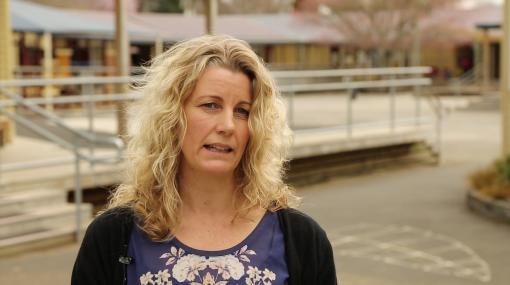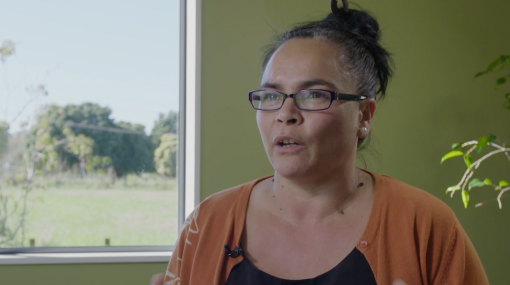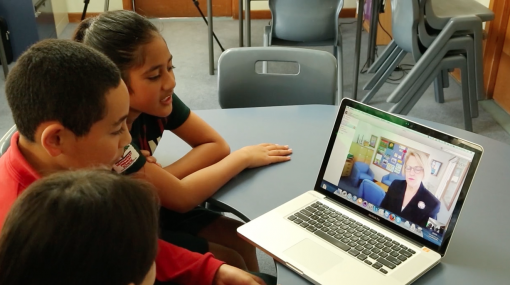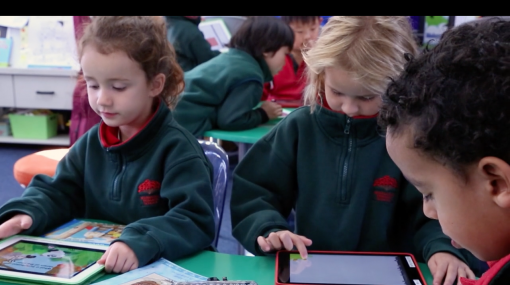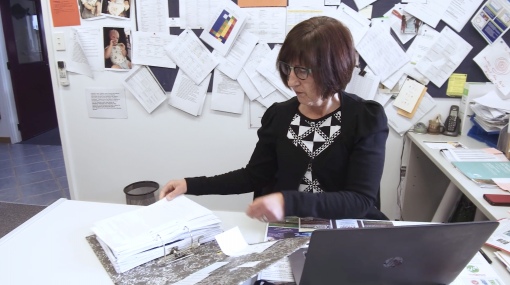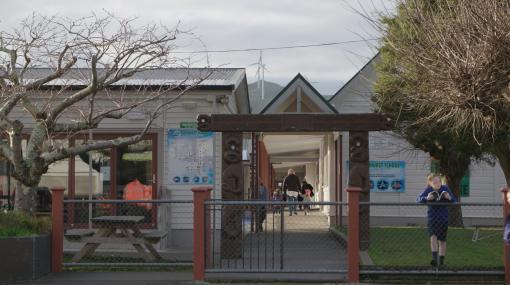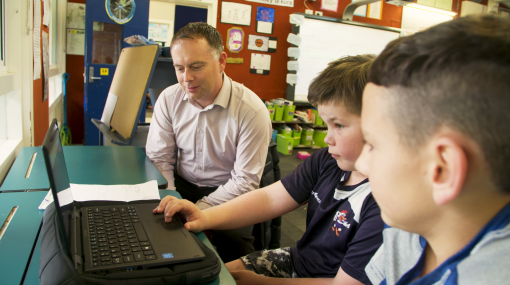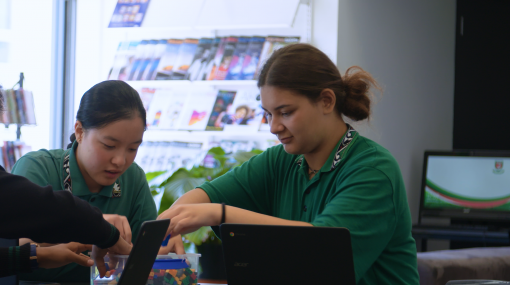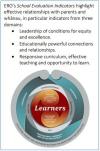Engaging with parents, whānau, and the community
Community engagement
Community engagement is one of eight principles in The New Zealand Curriculum that provide a foundation for schools' decision making. It is about establishing strong home-school partnerships where parents, whānau, and communities are involved in and support learning. This requires deliberate action to connect and build relationships to:
- design a local curriculum that meets the needs of the community
- enable parents to engage with their child's learning.
Productive partnerships
Partnerships with whānau/iwi and the wider community can be enhanced by the use of technologies. Technologies facilitate on-going reciprocal two-way communication between students and parents, giving parents anywhere, anytime access to their child's learning. This leads to improved learning outcomes for students through blended, culturally inclusive, and sustainable practices.
Principal, Dave McShane, teacher Susan Lee, and kaumatua from Te Kura o Kutarere discuss how technologies have helped to engage the local community to support and share students' learning.
Connecting home and school
Digital technologies can enable:
- a more seamless transition of learning between home and school
- parents to engage in learning
- collaboration between students, teachers, and parents/whānau.
Promoting two-way communication between home and school is the most relevant aspect of home–school partnerships.
Supporting parents to use technologies
Supporting parents to engage with their child's learning through technologies strengthens home-school partnerships.
Some parents will need support to use the tools and technologies in use. Consider providing support in ways that work for your parents, for example through:
- face-to-face technology sharing sessions
- information in the school newsletter or on the school website
- video clips to show parents how to use the tools and technologies in use.
Finlayson Park is a decile 1 school with many families that do not have access to the internet. The school provided free lunchtime teaching sessions for parents on how to use computers and access the internet. Benefits included improved engagement for students, and the development of a strong partnership with parents.
Using digital technologies to facilitate deeper engagement with parents, whānau, and the school community
There has been recognition of the importance of reciprocal two-way communication to enhance the understanding of student backgrounds and learning needs; to consult with parents, whānau, and communities on school priorities; and to engage in collaborative goal setting.
Discussion starters
Use these discussion starters in conjunction with the e-Learning Planning Framework to identify your current practice and some next steps in developing the use of digital technologies to engage with your community.
Principals and school leaders
How are you using digital technologies to connect with parents and whānau? Consider this in terms of supporting parents to:
- understand how the school works – for example, school vision, policies and procedures, uniforms, timetables, lunch orders, board of trustees meetings. How accessible is this content on your website?
- contribute to developing the local curriculum – for example, are community meetings both physical and virtual so parents can participate from their homes?
- engage with their child's learning – for example using real-time reporting, e-portfolios, class blogs, streaming school assemblies
- access and engage with the technologies you are using or planning on using for learning and communication
- share their questions, ideas and points of view, aspirations for the school – what tools could you use to do this, for example using Google forms, Survey Monkey, email, Facebook discussion group.
To what extent have you implemented strategies to inform and consult with the wider community about cybersafety, and digital citizenship?
How are you using digital technologies to support teachers and students to connect and collaborate with relevant groups from the local community and the wider world?
Teachers
What digital technologies do you use to interact with your community? How do you use these technologies to build relationships and support communication?
What steps could you take to engage your parent/whānau community so they interact and participate in their child’s learning?
What technologies could you use to open different channels of communication to meet the needs of your parent/whānau community?
Are you supporting students to use digital technologies to connect with outside experts as part of their learning?
Practical steps for using digital technologies to engage with parents and whānau
Use these e-learning examples and resources in conjunction with the e-Learning Planning Framework .
Principals and school leaders
Survey your community and collect information on their:
- wants and needs for communication
- understanding of tools being used.
NZC online | Tools – Tools you can select from to survey your community and gather information.
Use this information to inform your communication planning.
Identify ways you can use digital technologies to connect with parents and whānau to:
- ensure they understand what being a digital citizen means and how to consider cybersafety – explore Module 4: Digital citizenship at home
- encourage parent/whānau feedback and engagement with their child's learning – plan sessions to introduce and explore tools used in your school; explore Real-time reporting , e-Portfolios
- provide opportunities for parents to come to school and see the benefits of using digital technologies – explore Connecting with families and communities of Pacific learners .
Consider your approach to using social media – use the online guide, Using social media to connect with your community
Plan ways to help parents understand and use the tools their children are learning with – explore, Digital citizenship and online safety in the community .
Identify ways you can engage with Māori learners, whānau, hapū, iwi, and Māori communities to understand their views and what they can offer to support learners. Te ika unahi nui wānanga – A marae-based learning programme illustrates a learning partnership between the local marae and Coastal Taranaki School, where traditional skills and learning through digital technologies were merged.
Teachers
- When parents come into the classroom at the end of the day, invite them to look at their child's work online and leave a comment or talk about it with their child.
- Find out what kinds of technology parents use/have access to.
- Provide deliberate support/training to show parents how they can engage with students’ work – both face-to-face and through technology.
- Create and promote online spaces that invite parent participation and feedback, for example, blogs.
- Establish an online space for parents to access, and contribute to, student learning or specifically designed e-portfolios designed to inform future steps in learning.
- Consider using multiple channels to make connections with the community, for example, social media tools, real-time reporting tools, emails and text messages, the school website.
- Gather feedback on how interactions between home and school have had an impact on learning – share the success stories.
Building communication with parents and whānau
The engagement of whānau/iwi and wider community networks are enhanced by the use of digital technologies. A deeper level of engagement can lead to improved student achievement through culturally inclusive, and sustainable e-learning practices.
Use digital technologies to:
- build two-way communication
- increase parent engagement in student learning.
Hillcrest Normal School teacher, Michelle Macintyre shares how technology has enabled parents to be involved in different ways with students' learning. She explains, at their classroom learning celebrations they have been engaging parents with technology in practical ways. Creating videos of learning experiences facilitates discussion between students and parents, particularly for English as a second language families. The class blog has become a portal for parents to interact with. It's become an e-portfolio where student progress is shared.
Key resources
Digital resources, and examples to support schools as they consider community engagement.
Educationally powerful connections with parents and whānau (November 2015)
Useful examples of practice are described in this report from ERO and the Ministry of Education.
More information »
These pages include examples of schools making use of digital technologies to connect with their communities, and describing the benefits to learning and teaching.
Technologies suitable for different types of communication
e-Portfolios
e-Portfolios are a type of real-time reporting and provide anywhere, anytime access for family/whānau and the wider community to view and comment on students’ learning.
More information »
- e-Portfolios – further information and school stories on setting up and using e-portfolios in the classroom.
- real-time reporting – explores how real-time reporting can foster genuine home-school partnerships, and raise student achievement.
Renee Strawbridge (Deputy Principal - Mt Biggs School) explains how they use Seesaw to connect parents and whānau with student learning. She comments, "One of the parents in my class said to me that she really loved looking at the videos on Seesaw and she could see all of the learning that the kids have been doing on Seesaw. She was just amazed by the standard of the filming and how professional it looked."
Staff and parents from Kimi Ora School share the benefits e-portfolios provide for engaging families with students' progress and for transitioning students from the school to a day base.
The benefit for students, staff, and parents of using e-portfolios to communicate and collaborate are shared in this video from Kimi Ora School. An important outcome has been improved teacher practice as a result of reflections and information shared.
Electronic school newsletters
Electronic school newsletters are a common and effective way for a school to communicate items of interest to its community. They are intended to form only one part of your overall communications strategy.
There are many ways to create and publish a newsletter including:
- sending a PDF by email
- using your Student Management System
- using an electronic mail marketing service such as Mailchimp.
Keeping an archive of newsletters on your website could be useful for your community.
Russell Street School used a blog post format within Google docs to create a paperless newsletter. Deputy principal, James Rea explains the process they went through to set it up. The school admin team is responsible for overseeing the newsletter. It is set up so that the school principal and teachers can post directly to it. Students are invited to post as well.
The school community response has been positive. Including pictures and videos creates a more engaging view into the school news. The newsletter is searchable, and hyperlinks to sports draws and other notices makes accessing information easy.
Social Media
Social media provides a rich opportunity for schools to engage with their community.
See the Using social media to connect with your community page for further information and school stories on setting up and using social media to engage your community.
Rosin Lamb, Communications Manager at Pakuranga College, explains how they use social media to connect with the community. They use a number of online tools to manage their various communications channels. This has become an opportunity to work with parents to help them understand how social media can support community engagement.
School apps and parent portals
School apps and parent portals are available to keep the community informed about dates, times, events and notices.
When integrated with the school’s student management system, they might also enable the timetable, assessment, and achievement information to be made available to parents and students through a secure log-in.
Some apps and portals enable parents to notify absences, update contact information, provide permissions for trips or make payments.
A school app should be integrated as much as possible with the school website and social media so that information is consistent across each platform.
These snapshots provide a window into each school's experience of using technologies to engage with parents/caregivers, whānau, and the local community.
Sorry, no items found.
Use the filters to find videos that relate to your specific needs. More than one filter can be applied.
Filter by: Primary Secondary Communication Blogging Whānau engagement e-Portfolios Cultural responsiveness MASAM
Sorry, no items found.
Resources
Assessment online – Reporting to parents and whānau
Resources on reporting to parents and whānau , which support schools to share information with parents and whānau.
Ruia – School-whānau partnerships for Māori learners' success
A resource guiding principals and senior leaders to work in partnership with whānau.
Community engagement
A collection of tools, ideas, stories, and resources to support the community engagement principle from NZ Curriculum online.
Te Mangōroa
A resource for English-medium schools with stories, reports, statistics, and reviews that reflect effective practices supporting Māori learners to achieve education success as Māori. Te Mangōroa contains practical illustrations of what Ka Hikitia – Ka Hāpaitia means for teaching and learning. In the productive partnerships section, you will find resources, including video, reflecting the principles of productive partnership and examples of this from schools across New Zealand.
Te Kāhui Māngai
Te Kāhui Māngai is primarily designed to provide information on iwi (tribes) in New Zealand, including their rohe, hapū, marae, and representative organisations. It also includes certain national and Māori organisations.
Engaging with parents
Resources from the Educational Leaders website.
Strengthening local curriculum
Support for school and curriculum leaders with the process of curriculum design and review. It includes information, research, tools, suggested areas of focus, and inspirational stories to help schools make decisions about how to give effect to the national curriculum.
Information sharing and building learning partnerships
Guidance, review questions, activities, examples, and resources to enable deep discussions in your school about information sharing and learning partnerships. These discussions will help to maintain a clear focus on equitable and positive outcomes for all your students.
Early notification
Early Notification is a text (and email) messaging service that allows schools to customise messages to groups of parents/caregivers to quickly inform them of the unexplained absence of their child/children. It also provides a return path to the school's register to update the reasons for a student’s absence.
Research and readings
Key resource
Educationally powerful connections with parents and whānau (2015)
The Education Review Office (ERO) evaluated how well 256 schools worked with parents and whānau to respond to students at risk of underachievement. Of particular interest is the Focus on the use of technology (p.38) in the Findings section, which gives examples of schools working with parents and whānau to accelerate and support progress and improve achievement using technologies.
Building genuine learning partnerships with parents (2018)
This ERO report shares schools' successful strategies and approaches for improving achievement by developing genuine learning partnerships with parents. It also includes some simple strategies a few of the schools used to involve parents more in supporting the things children were learning at school.
Educationally powerful connections summary
A two-page PDF summary of the Educationally powerful connections with parents and whānau report. This includes key findings, quotes from students, parents, teachers, and leaders, and an inquiry framework that teachers and leaders may find useful when thinking about how to improve learning partnerships with the parents and whānau of students who are not achieving.
Education for Māori: Relationships between schools and whānau (2015)
This report brings together information about relationships between families and schools. It gives examples of practices that build effective relationships and highlights the importance for Māori to know who the people behind the school gate are, as well as what those people do. Whānau, primary, and secondary schools were surveyed to find out what they thought about their relationships.
Author: Report for the controller and auditor-general Tumuaki o te Mana Aratoke
